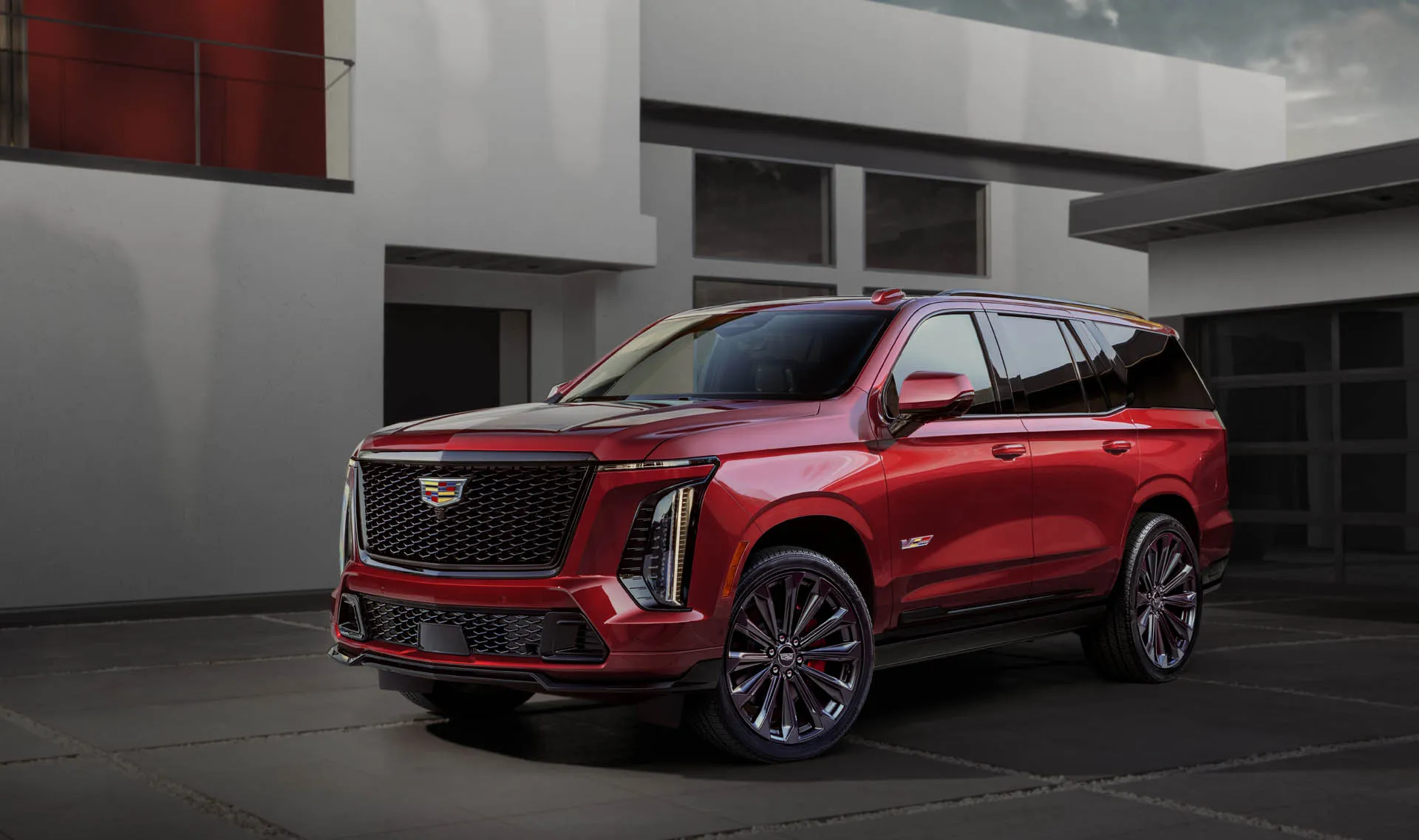[ad_1]
The Escalade can hustle. This big SUV has a supple ride, particularly when fitted with adaptive dampers and an air suspension, and its V-8s deliver great thrust. It’s a 7 here, accordingly.
Generally, yes. Most Escalades that leave the Arlington assembly plant in North Texas send power to all four wheels, though some versions come with rear-wheel drive.
How fast is the Cadillac Escalade?
You’ll be just fine with the base 6.2-liter V-8, which pushes 420 hp to the wheels through a quick-shifting 10-speed automatic transmission. It’ll hit 60 mph in around 6.0 seconds, which is really quick for something this big. If there’s a downside to this setup, it’s that the base engine can exacerbate the 10-speed automatic’s occasionally confused low-speed shifts. The Escalade-V’s setup simply overcomes that issue with more power.
Then there’s the Escalade-V with its supercharged 6.2-liter V-8 putting out a hearty 682 hp and 653 lb-ft of torque. It slices about a second and a half off of the run to 60 mph, but that’s only a part of its story. The boosted V-8 is ultra-rapid under any circumstances, and it makes a lovely muscle car noise.
All models stop just fine, but the Brembo brakes on the V are far stronger—as they should be given how much power is underhood.
The Escalade maxes out at an 8,300-pound towing capacity, which is fine for most boats and typical car trailers.
The ride is fine in standard form, but better with optional air and especially the adaptive dampers that help shrug off the pitter patter inevitably with 22-inch wheels wrapped in low-profile tires. We’ve yet to test the available 24-inchers, but can only imagine that the ride does not improve.
These are big, heavy SUVs that never feel remotely nimble. Making things worse is a seating position that’s more on than in. V models are only marginally sportier when it comes to a winding road. If you’re after a performance SUV that can do the deed on track, stick with an AMG-tweaked GLS.
[ad_2]
Source link
